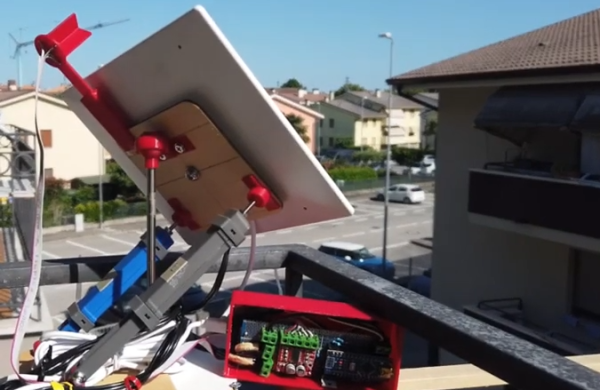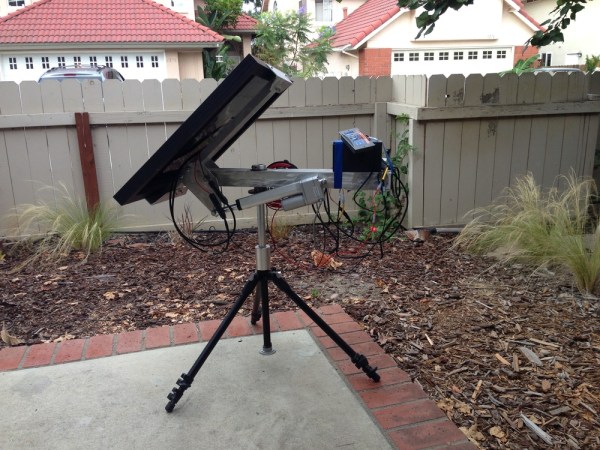It probably goes without saying that solar panels need to be pointed at the sun for optimal performance. The tricky bit is that the sun has a funny habit of moving on you. For those with a solar panel on their balcony or garden, mysoltrk tracks the sun to get the most out of a small solar panel.
[Fulvio] built the tracker to be solid, low cost, and sturdy enough to survive outdoors, which is quite a tall order. Low cost meant WiFi and GPS were out. The first challenge was low-cost linear actuators that were 3D printed with a mechanism to lock the shaft. An N20 6 volt 30 RPM geared motor formed the heart of the actuator. Four photo-resistors inside a printed viewfinder detect where the sun is, allowing the system to steer the array to get equal values on all the sensors. An Arduino Nano was chosen as it was low power, low cost, and easy to modify. A L298N h-bridge drives the motors, and a shunt is used instead of limit switches to reduce costs further.
There are a few other clever tricks. A voltage divider reads the power coming off the panel so the circuit doesn’t brown out trying to move the actuators. The load can also be switched off via an IRL540n. As of the time of writing, only the earlier versions of the code are up on GitHub, as [Fulvio] is still working on refining the tracking algorithm. But the actuators work wonderfully. We love the ingenuity and focus on low cost, which probably explains why mysoltrk was selected as a finalist in the 2023 Hackaday Prize Green Hacks challenge.
Continue reading “2023 Hackaday Prize: A Reinvented Solar Tracker”













